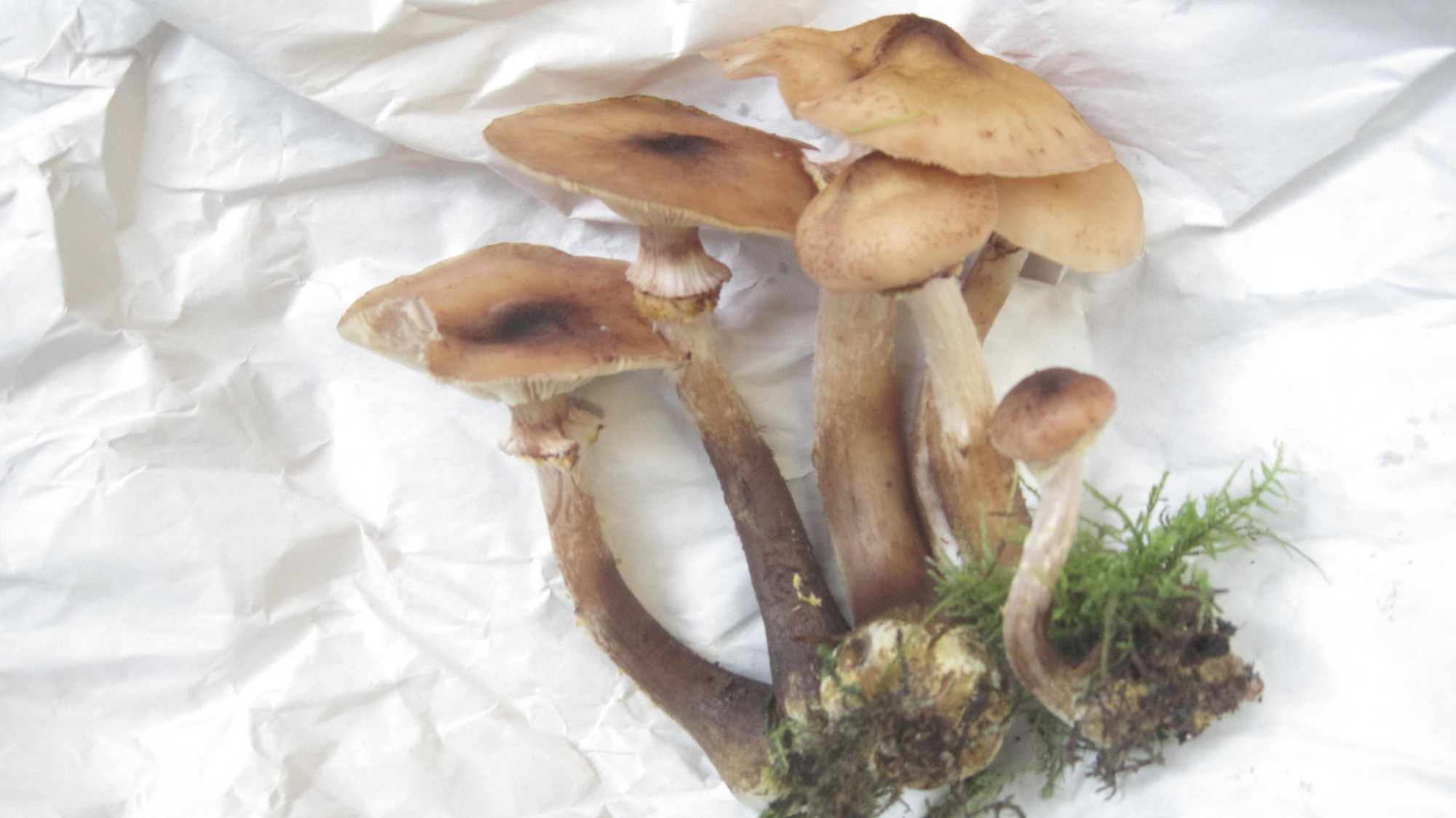Honey mushrooms in BC (Armillaria mellea)

Chef Robin here again, we’ve been finding tons of honey mushrooms on our wild foraging tours this Fall. And a lot of my Eastern European clients want to know how to find this edible species of mushrooms. I’ll key them out here for you and also caution you to some poisonous look alikes. These mushrooms vary a LOT in colour and shape which is why I wouldn’t recommend hunting for these unless you are an intermediate mushroom forager or go out with a guide. Remember, because there are so many environmental factors that can change mushrooms, you can’t just rely on this guide for a 100% positive ID, go out with an expert!
The most important factors to a positive ID of honey mushrooms…
- a white spore print (if you don’t know what a spore print is I wouldn’t recommend that you hunt for honeys, stick to chanterelles or oysters until you are more familiar with the forest.
- a thick ring around stalk
- usually has brown fibrils on the cap
- growth on wood (though it may be buried)
- bitter taste when raw (some people cant detect it)
- white to yellowish gills, definitely NOT greenish yellow
- Armillaria mellea have many close relatives that look very similar, so definitely proceed with caution.
The poisonous look alikes…
- Galerina marginata – Deadly galerina or also called the funeral bell mushroom – brown spore print and smoother, more uniformly coloured brown cap – DEADLY!
- Hypholoma fasciculare – Sulfur tufts – poisonous – yellow green gills & no ring on the stem
Another look alike that is edible is…
Hypholoma capnoides (conifer tufts) – They look very similar to toxic sulfur tufts, so be careful!
The key difference is in the…
- gill colour must be smoky gray and not dull yellow green
- taste of the mushroom should never be bitter (it’s meaty)
- has a long slender stem
- does NOT have a ring around the stem
Noted look alike to the conifer tuft : Pholiota malicola – none of these are known to be deadly poisonous though and Naematoloma dispersum which is noted by some sources as being possibly poisonous.
Honey Habitat:
I find clusters of honey mushrooms in the forest growing mostly on dead wood, though it can be found parasitizing on live trees too. Honey’s growing on hemlocks can give people stomach upsets. Around Vancouver, there are a lot of Western Hemlock trees, so it would be wise to do a small cooked taste test before you munch a whole ton of them.
Note all the above mentioned mushrooms poisonous and edible, grow on dead wood.
Cooking tips for honey mushrooms: Just because they’re called honey mushrooms doesn’t mean they’re sweet. They’re more mushroomy tasting! Some people don’t like eating the stems as they can be fibrous, so just pick firm young caps. Use them for stir frying. The bitter taste disappears with cooking and the texture is nice and firm.
Happy foraging!
Chef Robin
